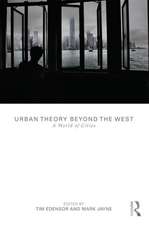Cultural Territorial Systems: Landscape and Cultural Heritage as a Key to Sustainable and Local Development in Eastern Europe: Springer Geography
Editat de Francesco Rotondo, Francesco Selicato, Vera Marin, Josefina Lopez Galdeanoen Limba Engleză Hardback – 2 mai 2016
Thus, heritage identity is one of the few elements, together with natural resources, which has the potential for economic development that is still firmly rooted in places and local populations. These towns are often the centerpiece of urban landscapes and geographical areas with original features, not always but often as individual places within networks of minor historical centers linked by shared history, traditions and/or natural elements (rivers, forests, river systems or other natural elements). They are outside the major tourist networks, even if now there is a budding interest in the touristic exploitation of these environments. So, they are the right places to pursue a sustainable and local development with a cultural perspective.
This book is a product of the VIVA_EASTPART project (Valorisation and Improving of management of Small Historic Centres in the eastern PARTnership region), under the EU-funded “ENPI Eastern Partnership” program. It complements the more practically-focused work that is in production from this group, more focused on empirical approaches to the development of minor historic centers of the nations involved. Though the book has been influenced by this research and working experience, the authors are solely responsible for the content and opinions presented.
| Toate formatele și edițiile | Preț | Express |
|---|---|---|
| Paperback (1) | 568.50 lei 38-44 zile | |
| Springer International Publishing – 7 iun 2018 | 568.50 lei 38-44 zile | |
| Hardback (1) | 591.26 lei 38-44 zile | |
| Springer International Publishing – 2 mai 2016 | 591.26 lei 38-44 zile |
Din seria Springer Geography
- 18%
 Preț: 961.55 lei
Preț: 961.55 lei - 15%
 Preț: 665.01 lei
Preț: 665.01 lei - 18%
 Preț: 792.72 lei
Preț: 792.72 lei - 20%
 Preț: 564.78 lei
Preț: 564.78 lei - 15%
 Preț: 533.88 lei
Preț: 533.88 lei - 18%
 Preț: 1224.36 lei
Preț: 1224.36 lei - 18%
 Preț: 949.73 lei
Preț: 949.73 lei - 18%
 Preț: 1115.46 lei
Preț: 1115.46 lei - 18%
 Preț: 1115.46 lei
Preț: 1115.46 lei - 18%
 Preț: 730.35 lei
Preț: 730.35 lei -
 Preț: 441.37 lei
Preț: 441.37 lei - 18%
 Preț: 1004.19 lei
Preț: 1004.19 lei - 18%
 Preț: 949.55 lei
Preț: 949.55 lei - 15%
 Preț: 644.30 lei
Preț: 644.30 lei -
 Preț: 398.74 lei
Preț: 398.74 lei - 18%
 Preț: 955.25 lei
Preț: 955.25 lei - 18%
 Preț: 787.15 lei
Preț: 787.15 lei - 18%
 Preț: 1003.38 lei
Preț: 1003.38 lei - 18%
 Preț: 897.14 lei
Preț: 897.14 lei - 18%
 Preț: 1117.03 lei
Preț: 1117.03 lei - 18%
 Preț: 1120.18 lei
Preț: 1120.18 lei - 18%
 Preț: 1128.08 lei
Preț: 1128.08 lei - 18%
 Preț: 726.37 lei
Preț: 726.37 lei - 18%
 Preț: 964.54 lei
Preț: 964.54 lei - 15%
 Preț: 647.40 lei
Preț: 647.40 lei - 15%
 Preț: 646.62 lei
Preț: 646.62 lei - 15%
 Preț: 640.71 lei
Preț: 640.71 lei - 18%
 Preț: 2154.04 lei
Preț: 2154.04 lei - 15%
 Preț: 648.05 lei
Preț: 648.05 lei - 24%
 Preț: 1118.09 lei
Preț: 1118.09 lei -
 Preț: 391.61 lei
Preț: 391.61 lei - 18%
 Preț: 961.55 lei
Preț: 961.55 lei - 18%
 Preț: 948.16 lei
Preț: 948.16 lei - 18%
 Preț: 1563.24 lei
Preț: 1563.24 lei - 15%
 Preț: 647.27 lei
Preț: 647.27 lei - 24%
 Preț: 857.93 lei
Preț: 857.93 lei - 24%
 Preț: 1139.71 lei
Preț: 1139.71 lei - 5%
 Preț: 1116.73 lei
Preț: 1116.73 lei - 20%
 Preț: 551.32 lei
Preț: 551.32 lei - 15%
 Preț: 637.13 lei
Preț: 637.13 lei - 15%
 Preț: 642.03 lei
Preț: 642.03 lei - 18%
 Preț: 940.39 lei
Preț: 940.39 lei -
 Preț: 395.09 lei
Preț: 395.09 lei -
 Preț: 365.45 lei
Preț: 365.45 lei - 18%
 Preț: 960.13 lei
Preț: 960.13 lei - 24%
 Preț: 643.01 lei
Preț: 643.01 lei
Preț: 591.26 lei
Preț vechi: 739.07 lei
-20% Nou
Puncte Express: 887
Preț estimativ în valută:
113.13€ • 118.13$ • 93.42£
113.13€ • 118.13$ • 93.42£
Carte tipărită la comandă
Livrare economică 11-17 aprilie
Preluare comenzi: 021 569.72.76
Specificații
ISBN-13: 9783319207520
ISBN-10: 3319207520
Pagini: 299
Ilustrații: XIV, 386 p. 177 illus., 31 illus. in color.
Dimensiuni: 155 x 235 x 26 mm
Greutate: 0.91 kg
Ediția:1st ed. 2016
Editura: Springer International Publishing
Colecția Springer
Seria Springer Geography
Locul publicării:Cham, Switzerland
ISBN-10: 3319207520
Pagini: 299
Ilustrații: XIV, 386 p. 177 illus., 31 illus. in color.
Dimensiuni: 155 x 235 x 26 mm
Greutate: 0.91 kg
Ediția:1st ed. 2016
Editura: Springer International Publishing
Colecția Springer
Seria Springer Geography
Locul publicării:Cham, Switzerland
Public țintă
ResearchCuprins
Introduction and background.- Introduction.- The concept of heritage.- Local self-sustainable development.- The cultural heritage as a key to the development of cultural and territorial integrated plans for the exploitation of networks of minor historical centres and their landscape systems.- Lesson learned from practices on safeguarding Cultural Heritage: minor historic centres revitalisation.- Characterisation of minor historic centres.- Main Lessons learned from practices on revitalising Cultural Heritage linked to minor historic centres.- Territorial Cultural Systems: a different Approach to Cultural Heritage.- Territorial Cultural Systems: A first definition.- The main elements of strategic development processes.
Textul de pe ultima copertă
This book seeks to enhance the cultural dimension of sustainable development and particularly focuses on minor historic centers and their natural and rural landscapes. In a society becoming ever more globalized, without territorial restrictions in the production of goods and able to reproduce in China the goods and product characteristic of South American crafts (to mention just two extremes), the only element that can still be contextualized is heritage identity: the result of close integration between cultural assets, intangible assets and settled communities.
Thus, heritage identity is one of the few elements, together with natural resources, which has the potential for economic development that is still firmly rooted in places and local populations.These towns are often the centerpiece of urban landscapes and geographical areas with original features, not always but often as individual places within networks of minor historical centers linked by shared history, traditionsand/or natural elements (rivers, forests, river systems or other natural elements). They are outside the major tourist networks, even if now there is a budding interest in the touristic exploitation of these environments. So, they are the right places to pursue a sustainable and local development with a cultural perspective.
This book is a product of the VIVA_EASTPART project (Valorisation and Improving of management of Small Historic Centres in the eastern PARTnership region), under the EU-funded “ENPI Eastern Partnership” program. It complements the more practically-focused work that is in production from this group, more focused on empirical approaches to the development of minor historic centers of the nations involved. Though the book
has been influenced by this research and working experience, the authors are solely responsible for the content and opinions presented.
Thus, heritage identity is one of the few elements, together with natural resources, which has the potential for economic development that is still firmly rooted in places and local populations.These towns are often the centerpiece of urban landscapes and geographical areas with original features, not always but often as individual places within networks of minor historical centers linked by shared history, traditionsand/or natural elements (rivers, forests, river systems or other natural elements). They are outside the major tourist networks, even if now there is a budding interest in the touristic exploitation of these environments. So, they are the right places to pursue a sustainable and local development with a cultural perspective.
This book is a product of the VIVA_EASTPART project (Valorisation and Improving of management of Small Historic Centres in the eastern PARTnership region), under the EU-funded “ENPI Eastern Partnership” program. It complements the more practically-focused work that is in production from this group, more focused on empirical approaches to the development of minor historic centers of the nations involved. Though the book
has been influenced by this research and working experience, the authors are solely responsible for the content and opinions presented.
Caracteristici
Makes geographically broad comparisons through Europe and beyond Links to more theoretical material and to online resources through the VIVA network Supplies very concrete and practical knowledge on cultural heritage management with practical examples from Eastern Europe Includes supplementary material: sn.pub/extras














